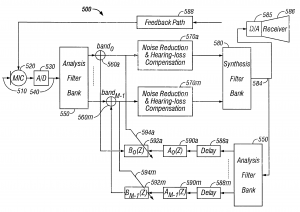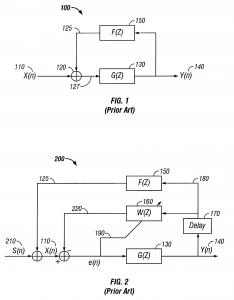Noise is an actuality of modern life. From busy restaurants to the subway. Noise is all around and may become astonishing sometimes.
Modern hearing aid channels commonly employ digital noise reduction provide improved speech understanding in noise algorithms. The potential benefit of these provides relaxed listening or increased ease. These algorithms provide improved speech understanding in noise or at the least to provide relaxed listening or increased ease of listening. These algorithms state the benefits of Digital Noise Reduction in hearing aids.
You can purchase the latest hearing aids at a fair price through HearingSol, If you need more information or you have a query about Digital Noise Reduction in Hearing Aid, just give us a call on +91-9327901950. We are always here to help you.


Digital Noise Reduction in Hearing Aids
Modern hearing aids increased ease of listening. In hearing aid channels this study, 22 adults were fitted with 16-channel wide-dynamic-range compression hearing aids containing DNR processing. The DNR includes both modulation-based and Wiener-filter-type algorithms working simultaneously.
The potential benefit of these algorithms is to provide improved speech understanding in noise. Or even speech intelligibility as well as acceptable noise level. Assess the ANL using the Hearing in Noise Test (HINT) with DNR on and DNR off. Assess the ANL without hearing aids.
The results showed a significant mean improvement for the ANL (4.2 dB) DNR-on condition, compared to the DNR-off condition. The findings suggest that at least the constraints of the DNR algorithms and test conditions employed in this study. There was a significant correlation between the magnitude of ANL improvement (relative to DNR on) and the DNR-off ANL. There was no significant mean improvement for the HINT for the DNR-on condition. On an individual basis, the HINT score did not significantly correlate with either aided ANL (DNR on or DNR off). There was no significant mean improvement for the HINT for the DNR-on condition. DNR can significantly improve the clinically measured ANL. This may result in improved ease of listening for speech-in-noise situations.
Benefits of Digital Noise Reduction In Hearing Aids
The hearing aid that comprises digital noise reduction technology can pick up the unique difference between speech and noise. In a non-noisy situation, it is quite easy for the hearing aids to pick up the sounds because at that time picked up sound is only present around you. However, in noisy situations, your device will pick up the noise and automatically turn down the volume in the noisier channels.
And also there is no hearing aid that completely removes the unwanted noise. This feature of the hearing aid helps the people to find the background noise less effective and they can catch the speech easily and understand them.
We cannot say the digital noise reduction technology perfect but it helps a lot in reducing the unwanted noise that you come across in your daily life.
Secondary Goals
A secondary goal of auditory space allocation could result, which could assist in cognitive processing DNR is to provide relaxed listening or to improve ease of listening. The reduction of background noise, even when speech is not present, may reduce listening fatigue and increase listening awareness.
This could assist in cognitive processing. A possible benefit of DNR use, therefore, would be a more alert and focused listener in difficult listening situations. This is an improvement in central auditory space allocation could result.
Conclusion
These algorithms are potentially beneficial in providing improved speech understanding in noise. Or, at least, it should provide either relaxed listening or increased ease of listening.
However, Digital noise reduction technique is not precise. But it can go a long way in helping to resist the unwanted noise you encounter in your daily life. It is critical for hearing healthcare professionals to understand that DNR algorithms are not exactly similar to hearing aid manufacturers. Electroacoustic analyses of DNR are possible by conducting matcher and prob microscopy measurements in hearing aid analyzers, and this should be an objective test included verification and selection procedures.
